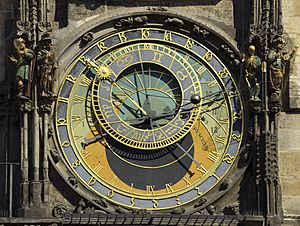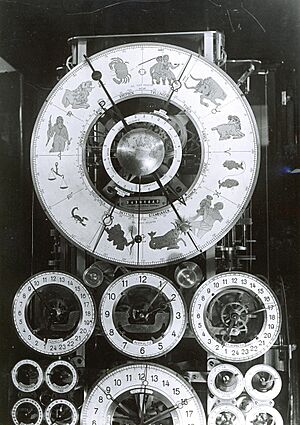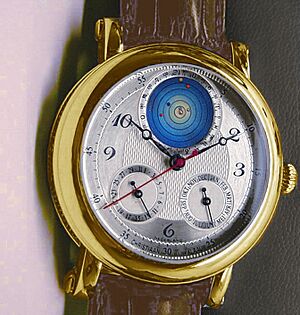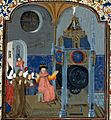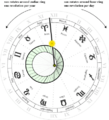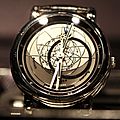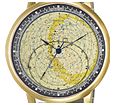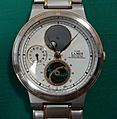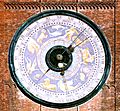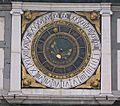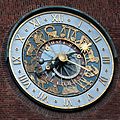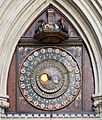Astronomical clock facts for kids
An astronomical clock is a special kind of clock. It has unique parts and dials (the clock face) that show information about space. These clocks can tell you where the sun, moon, and zodiac signs are. Sometimes, they even show the main planets. Some astronomical clocks are huge and found in public places. Others are smaller tools for inside buildings. You can even find very accurate astronomical watches.
The idea for these amazing clocks is very old. For example, in ancient Greece, around 200 BC, there was something called the Antikythera mechanism. It wasn't a clock like we know today. But it used many complex gears. It could figure out where the sun, moon, and stars would be at any time. Many experts believe that European astronomical clocks came from this ancient technology. Later, in the 1st century BC, a writer named Cicero wrote about how Archimedes and Posidonius made similar devices. These were called orreries. They could also show the movements of the planets.
In the Middle Ages, people believed the Earth was the center of the universe. This idea is called geocentrism. So, the astronomical clocks from that time showed the Sun going around the Earth. This made sense to people before Nicolaus Copernicus showed that the Earth actually goes around the Sun.
Images for kids
-
The courtier and bibliophile Louis de Gruuthuse in front of an astronomical clock. Henri Suso, Horloge de Sapience, 1470-1480
-
Diagram showing how the zodiac is projected on to the ecliptic dial – the symbols are often drawn inside the dial.
-
Stereographic projection from the North Pole.
-
Sint-Truiden clock
-
Tour de l'Horloge, Auxerre
-
Clock at Chartres Cathedral
-
Strasbourg astronomical clock in Strasbourg Cathedral
-
Beauvais astronomical clock in Beauvais Cathedral
-
The Eise Eisinga Planetarium in Franeker
See also
 In Spanish: Reloj astronómico para niños
In Spanish: Reloj astronómico para niños


